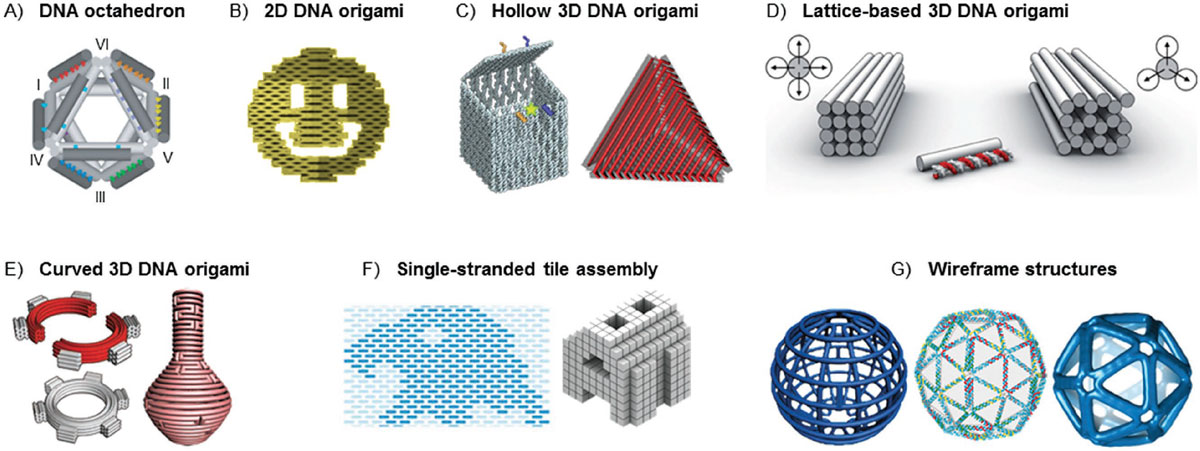Exploring DNA Origami in Nanotechnology and Biomedicine
Definition: DNA origami is a cutting-edge technique in nanotechnology that enables the folding of DNA strands into diverse nanoscale shapes and structures. This DNA nanotechnology method facilitates the precise construction of nanostructures for targeted therapy, drug delivery, biosensing, and nanoelectronics, leveraging the inherent programmability of DNA for applications in nanomedicine and beyond.
Definition and Principle of Operation
Employing the predictable base pairing of DNA, the DNA origami technique folds long single strands of DNA with the aid of multiple shorter staple strands into designated shapes. This process allows for the assembly of complex nanostructures with nanometer precision, showcasing the versatility of DNA as a material for nanoscale engineering.
How Does DNA Origami Work?
The creation of a specific nanostructure starts with its design, often utilizing advanced computational tools. A long, viral-origin scaffold strand of DNA is manipulated by custom-designed, short oligonucleotide strands known as staples. These staples guide the folding of the scaffold into the target shape through selective base pairing. The assembly occurs spontaneously in solution, facilitated by precise temperature control, culminating in the formation of the intended nanostructure.
Key Features of DNA Origami
DNA origami stands out for its:
- Precision Assembly: It offers unparalleled control over the nanoscale architecture of structures, enabling the creation of complex geometries with specific functionalities.
- Versatility and Programmability: The method supports the design of a broad array of shapes and the functionalization of nanostructures for targeted applications, including nanomedicine and nanoelectronics.
- Biocompatibility: DNA-based structures are inherently compatible with biological systems, making them ideal for applications in drug delivery and biosensing.
- Customizable Functionality: Through the attachment of functional molecules like drugs, proteins, or nanoparticles, DNA origami structures can be tailored for specific applications such as targeted therapy and sensitive detection of biological markers.
Limitations of DNA Origami
Despite its potential, DNA origami faces challenges:
- Environmental Stability: The susceptibility to nuclease degradation and the requirement for stable environmental conditions limit the practical longevity and application range of DNA nanostructures.
- Production Scalability: The complex and cost-intensive production of DNA origami structures at scale poses a significant hurdle for widespread application.
Applications of DNA Origami
DNA origami's applications are vast and expanding:
- Targeted Drug Delivery: Nanostructures designed for nanomedicine can encapsulate and selectively deliver therapeutic agents to specific sites, minimizing side effects and improving treatment efficacy.
- Nanoscale Biosensing: DNA origami enables the development of biosensors capable of detecting minute quantities of biomolecules, offering advances in diagnostics and monitoring.
- Advancements in Nanoelectronics: By providing a scaffold for the assembly of electronic components at the nanoscale, DNA origami facilitates the development of next-generation electronics with enhanced capabilities.
- Innovations in Nano-Robotics: Dynamic DNA origami structures that respond to environmental stimuli herald new possibilities in nanorobotics, promising novel approaches to targeted therapy and material science.
The ongoing evolution of DNA origami technology heralds a transformative era in nanotechnology, nanomedicine, and materials science. As research progresses, the scope of applications from targeted drug delivery systems to advanced biosensing mechanisms and beyond continues to grow, driving forward the frontiers of science and technology.
Further Reading
Nature Reviews Methods Primers, DNA origami - a primer
Chemical Reviews, Recent Advances in DNA Origami-Engineered Nanomaterials and Applications
Applied Bionics and Biomechanics, Concepts and Application of DNA Origami and DNA Self-Assembly: A Systematic Review

